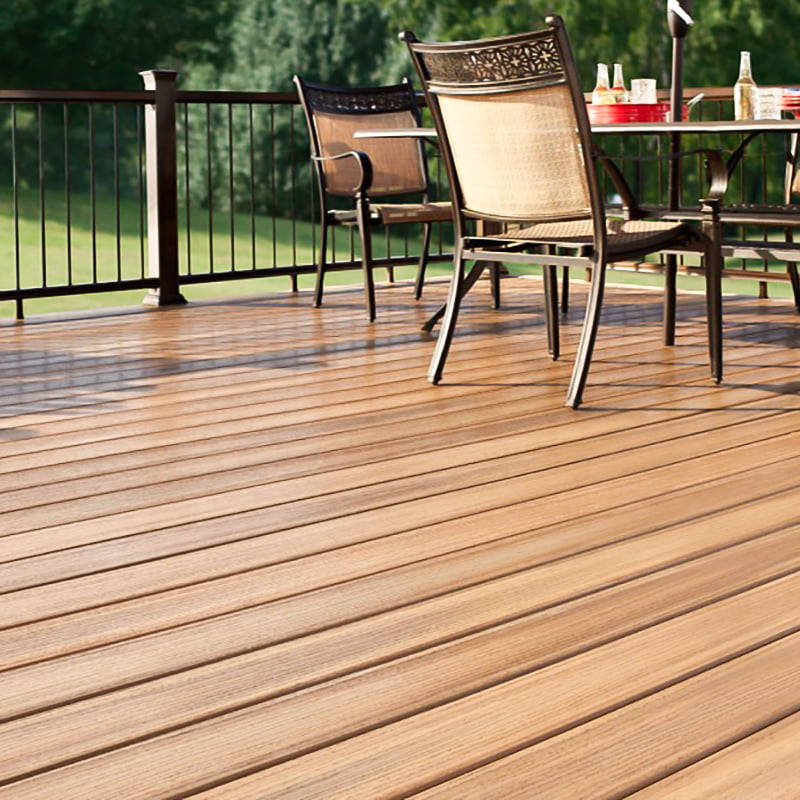 +86-572-8086381 / 8282992
+86-572-8086381 / 8282992  hzjfence1@hzjfence.com
hzjfence1@hzjfence.com  +86-572-8086381 / 8282992
+86-572-8086381 / 8282992  hzjfence1@hzjfence.com
hzjfence1@hzjfence.com 
Jan 07, 2025
When selecting materials for outdoor spaces, fire resistance is often overlooked. However, for homeowners and builders alike, it is a critical factor in ensuring the safety and longevity of decking structures. Among the many options available, PVC decking has emerged as a popular choice due to its durability, aesthetic appeal, and low maintenance requirements. But the question remains: Does PVC decking possess any fire resistance properties?
The Nature of PVC Decking
Polyvinyl chloride (PVC) decking is a synthetic material made from plastic, offering numerous benefits over traditional wood or composite alternatives. Its resistance to moisture, rot, and insect damage makes it an attractive option for decks exposed to the elements. However, its fire resistance capabilities often come into question. The truth is, PVC decking can exhibit some degree of fire resistance, but it is important to understand the nuances.
Fire Resistance in PVC Decking
PVC itself is a thermoplastic material that, in its pure form, is flammable. Unlike some materials that naturally resist combustion, PVC can burn when exposed to an open flame. However, manufacturers typically incorporate flame retardants into the composition of PVC decking to improve its fire resistance. These additives are designed to slow down the combustion process, reduce the spread of fire, and increase the time it takes for the material to catch fire.
While PVC decking is not entirely fireproof, its fire resistance is notably better than that of untreated wood. In the event of a fire, PVC will not fuel the flames as readily as wood, which tends to burn faster and produce more smoke. This makes PVC decking a safer choice in areas prone to wildfires or other fire hazards.
Performance Under Fire Conditions
The fire resistance of PVC decking can vary depending on the specific brand and product. Many high-quality PVC decking options meet or exceed the requirements of fire safety codes, including those established by the National Fire Protection Association (NFPA) and Underwriters Laboratories (UL). These products are often rated with a Class A or Class B fire rating, which indicates their ability to withstand fire exposure.

A Class A rating signifies the highest level of fire resistance, meaning the material is highly resistant to ignition and flame spread. A Class B rating, while still robust, indicates a moderate level of fire resistance. These ratings are crucial in determining the suitability of PVC decking for use in specific environments, particularly in regions with strict fire safety regulations.
Limitations and Considerations
Despite its fire-resistant qualities, PVC decking should not be considered fireproof. Under extreme conditions, such as intense heat or prolonged exposure to flames, PVC decking can still ignite and burn. Furthermore, the plastic nature of PVC means that it will melt when exposed to very high temperatures, potentially spreading molten material and contributing to fire spread.
Additionally, PVC decking's fire resistance may degrade over time, particularly if exposed to UV rays and other environmental factors. Over the years, the protective additives in the material can break down, potentially reducing the deck's ability to resist fire. Regular maintenance, such as cleaning and resealing, can help preserve the material’s fire-resistant properties.
PVC decking offers a significant improvement in fire resistance over traditional wood decking. While it is not entirely fireproof, the material’s ability to slow the spread of flames and resist ignition makes it a safer option for outdoor spaces. For those prioritizing fire safety, selecting a high-quality PVC decking product with a proven fire resistance rating can provide peace of mind. However, it is essential to remember that no material is entirely immune to fire, and additional precautions, such as fire breaks and safety practices, should always be part of any comprehensive fire prevention strategy.